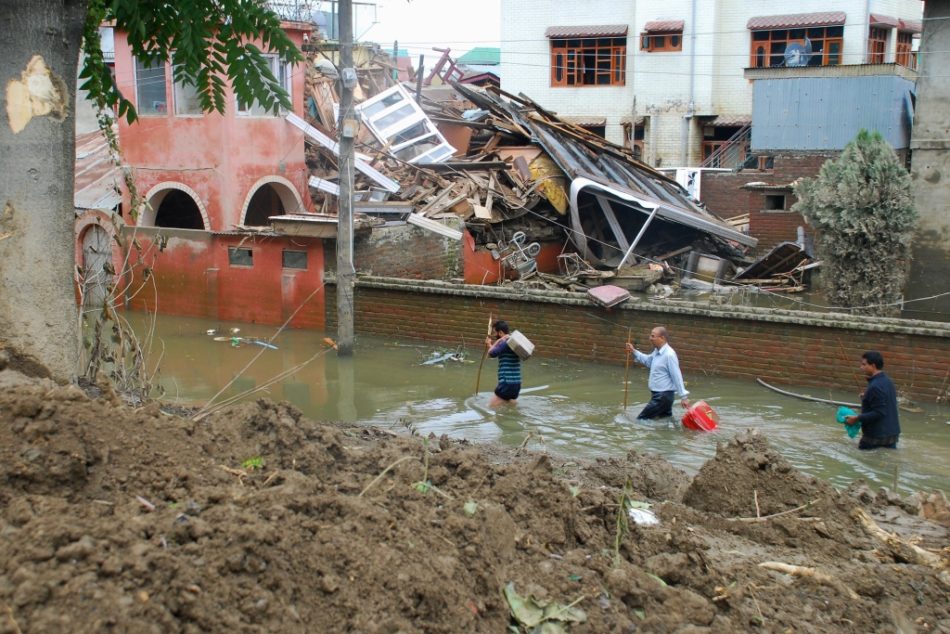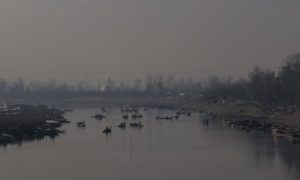What was built over years and probably decades was undone in a matter of a few days, and we could do nothing about it.
It has been a good eight years now since the devastating floods of 2014 ravaged Kashmir. Some things may have been forgotten, but some memories remain.
It was divine intervention that the flood waters stopped some two hundred metres from our gate, but everyone was not that lucky. Directly or indirectly, the flood entered every house of the Valley.
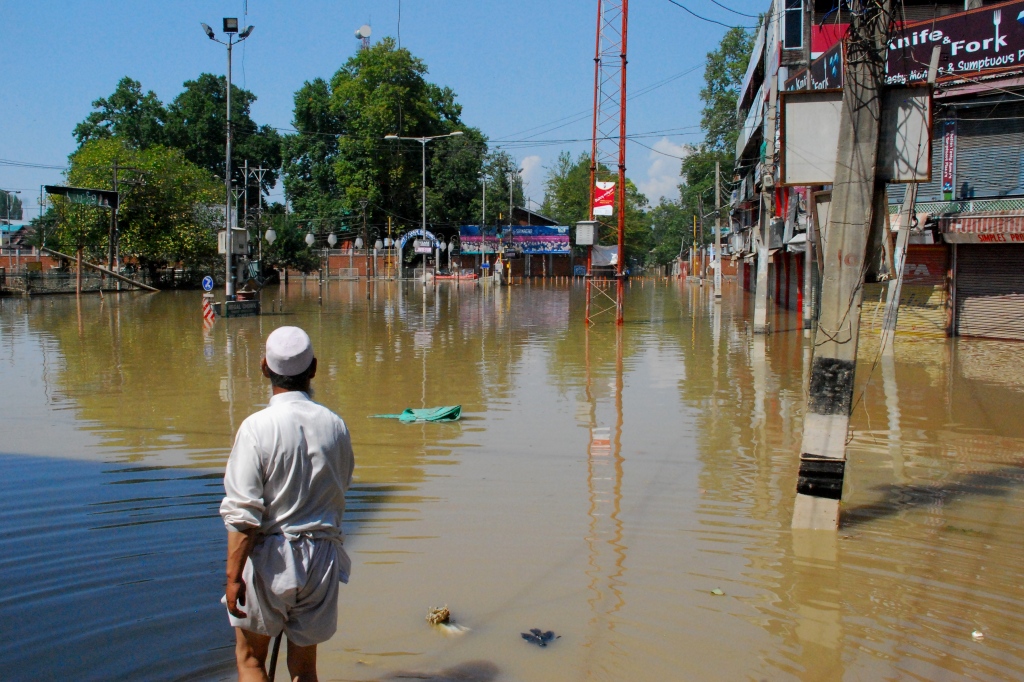
A man assessing the flood situation at Regal Chowk in the city centre. [FPK Photo/Aamir Nowshahri]
For almost a month after the fiery waters declared war against the population, we had no clue about our loved ones with all means of communication and outreach reduced to a state of non existence. No phones. No roads. Nothing.

A building submerged in flood waters at Raj Bagh. [FPK Photo/Aamir Nowshahri.]
My sister got married one month before the flood and had left for Bangalore just one day before the embankments of the Jhelum gave up.
We were safe by the grace of the Almighty, but there was no way to convey it to her.
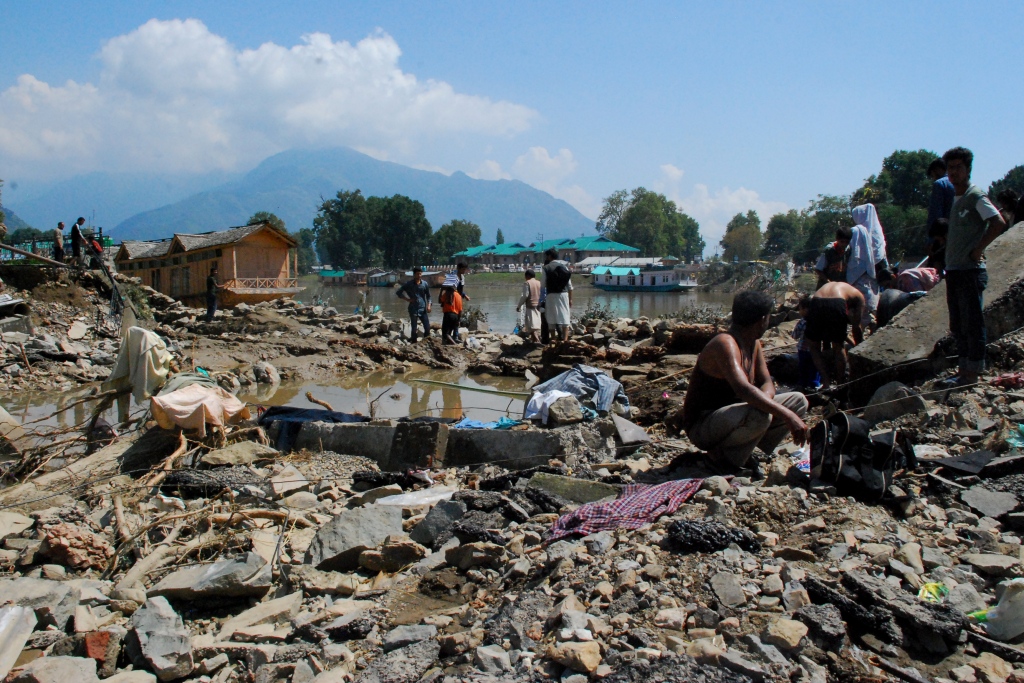
The broken embankment of the river Jhelum near Regal Chowk. [FPK Photo/Aamir Nowshahri.]
She would call one of my aunts who lived in an area that was not affected by the deluge, and my aunt would lie to her every time saying we were fine.
Later when things got a little better and it was possible for us to visit relatives, my aunt revealed that she had a tough time stopping her tears every time she talked to my sister on the phone.
After she hung up, the flood of salty water from her eyes would not stop.
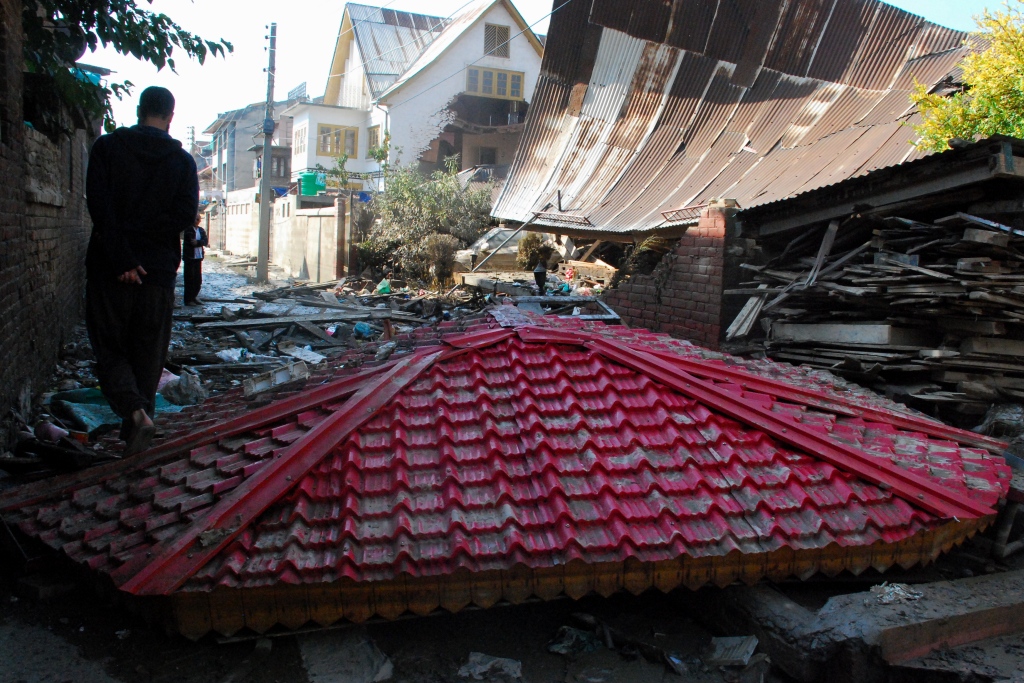
Damaged houses at Balgarden area of Srinagar. [FPK Photo/Aamir Nowshahri.]
My aged maternal grandmother had been bedridden for a while before the fateful day. As flood waters entered the area, she and another uncle of mine who had also not been keeping well had to be piggybacked for almost a kilometre through waist-deep waters before boarding a vehicle that took them and my uncle’s family to safety.
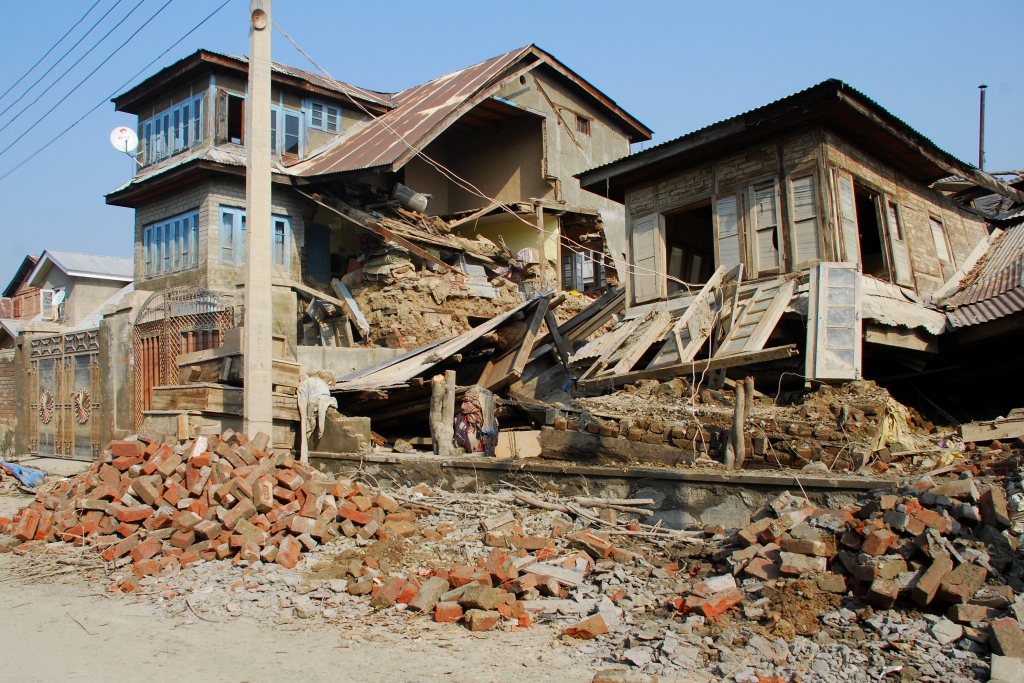
Damaged houses at Jawahar Nagar area of Srinagar. [FPK Photo/Aamir Nowshahri.]
It took my grandmother nearly two weeks to recover from the trauma and exhaustion of what she had been through and the only words that came out of her mouth during that period were prayers for the safety of everyone, irrespective of whether they were known to her or not.

Meals being served at a relief camp in Kashmir University. [FPK Photo/Aamir Nowshahri.]
Another of my aunt lives in an area that was among the worst affected.
For two days, with two storeys of the house consumed by the flood, she and my uncle had to live in the third-storey hall before being evacuated by boat.
They spent a couple of nights at a relief camp and their journey also included climbing hills before being able to reach the house of a relative to safety.
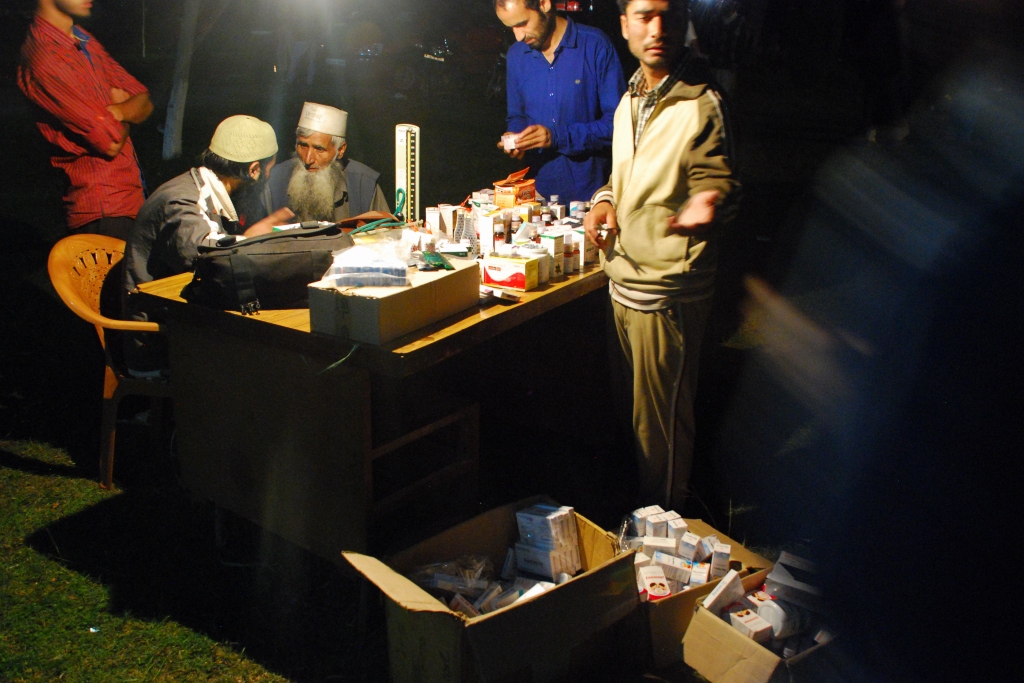
Medical consultations being provided at a relief camp in Kashmir University. [FPK Photo/Aamir Nowshahri.]
This story also became known to us after a good one and a half months. Such was the shock that for some time my aunt and uncle could not muster enough courage to talk about the ordeal that they had been through.
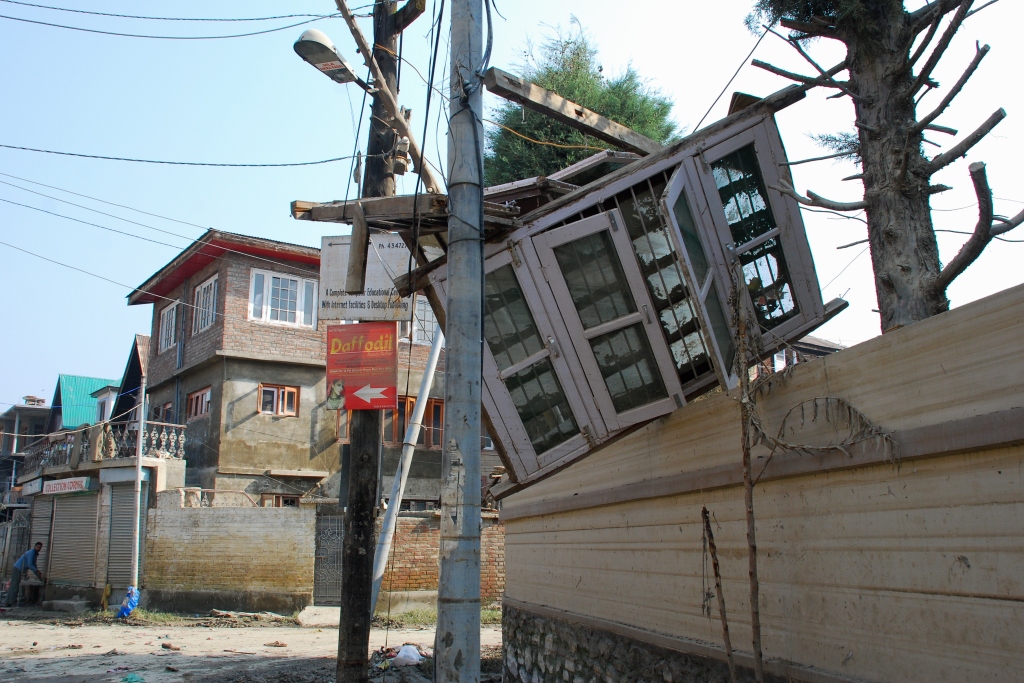
A window frame stuck atop a wall at Jawahar Nagar area of Srinagar. [FPK Photo/Aamir Nowshahri.]
With mobility severely limited, I tried my best to capture whatever I could. My relationship with my camera metamorphosed during those days and I went wherever it took me.
I remember my mother asking me one day where I would be the whole day while my office was still submerged under water.
I told her I was making a humble attempt to document what was happening around town, a once in a life time experience.

The kitchen of a house affected by floods at Shivpora. [FPK Photo/Aamir Nowshahri.]
I succeeded to some extent, and what I saw on the streets made me realise how insignificant man is in the whole scheme of things.
What was built over years and probably decades was undone in a matter of a few days, and we could do nothing about it.
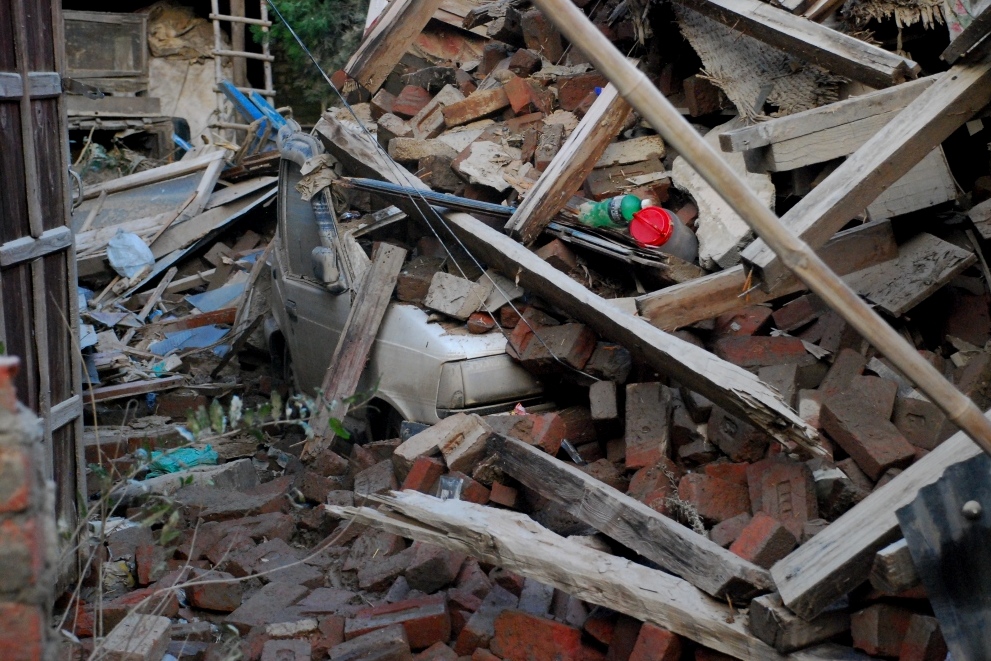
A car under a collapsed house at Balgarden. [FPK Photo/Aamir Nowshahri.]
Wherever I went, scenes of damage and destruction greeted me.
Houses reduced to rubble with roofs touching the ground were the most common and heartbreaking sight. People were making frantic attempts to salvage whatever they could from the mountains of debris.
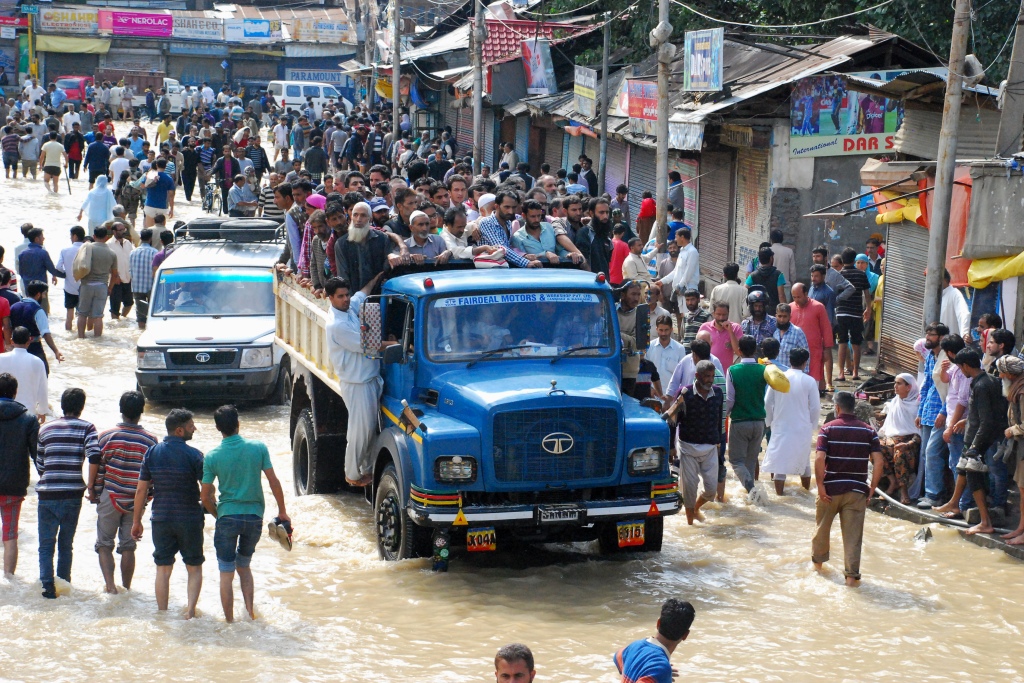
Rescue operations at Qamarwari Chowk of Srinagar. [FPK Photo/Aamir Nowshahri.]
On one of my visits, the sight of men walking through knee-deep flood waters with sticks in one hand and suitcases containing rescued items in the other turned me emotional.
I actually looked for a corner where nobody could see me and I cried my heart out.
It was no less than doomsday for those who were struck with the disaster.

Damaged ambulances at SMHS Hospital. [FPK Photo/Aamir Nowshahri.]
The most striking memory that I have of those times is when I went to my alma mater after the flood waters receded.
I felt heaviness in my feet walking in the playground which was covered with dry and curled flakes of mud.
The garden where we had our lunch and played our games for 13 years seemed like a vast carpet of broken earth.

Scenes of destruction at Balgarden. [FPK Photo/Aamir Nowshahri.]
I gathered enough strength to enter the building. The walk through the corridor made me feel I was on the set of a horror movie.
Serpentine lines of mud left behind after a recent mopping of the floor and growths of fungi on the walls presented a scary scene.
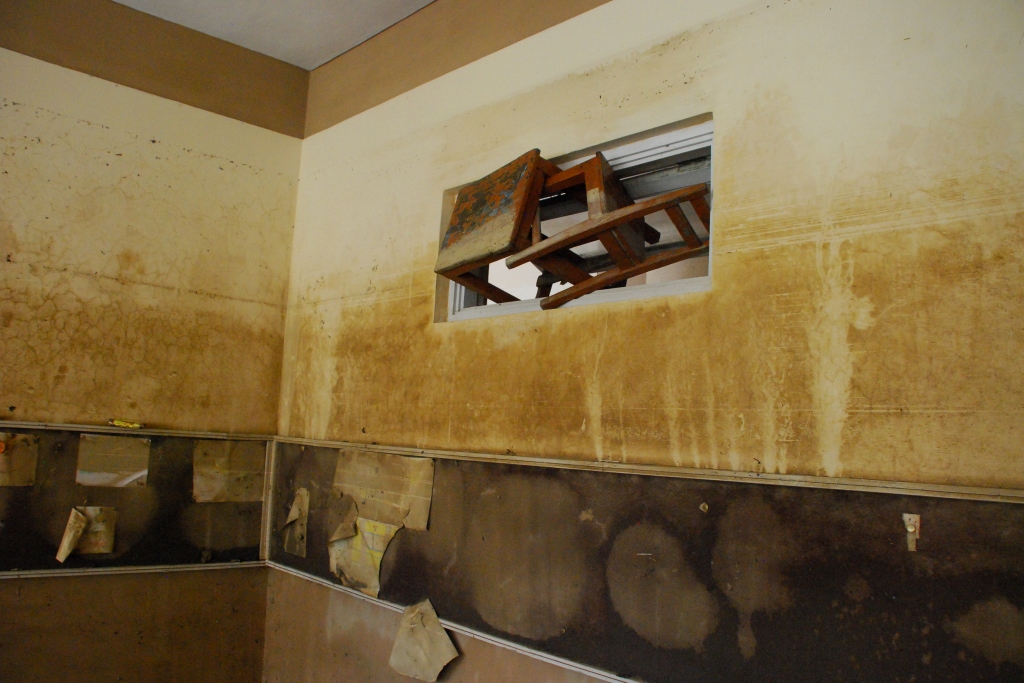
The scene inside a kindergarten classroom of a private school in Srinagar. [FPK Photo/Aamir Nowshahri.]
As I walked into my Lower Kindergarten classroom, the sight of a table and a chair stuck in a ventilator just below the ceiling sent shivers down my spine.
I wondered it might have been the same chair on which I used to sit when I was a student there.
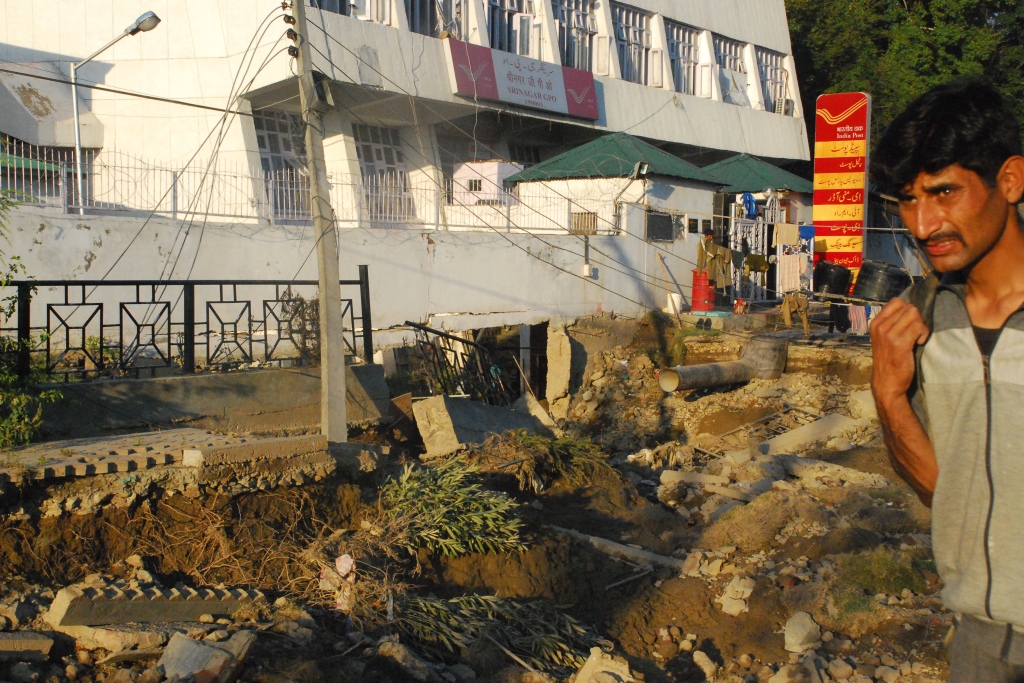
Scene of damaged river embankment near General Post Office, Srinagar. [FPK Photo/Aamir Nowshahri.]
The horrific scene remained etched in my memory and I could not sleep for many nights after witnessing what I did on that day.
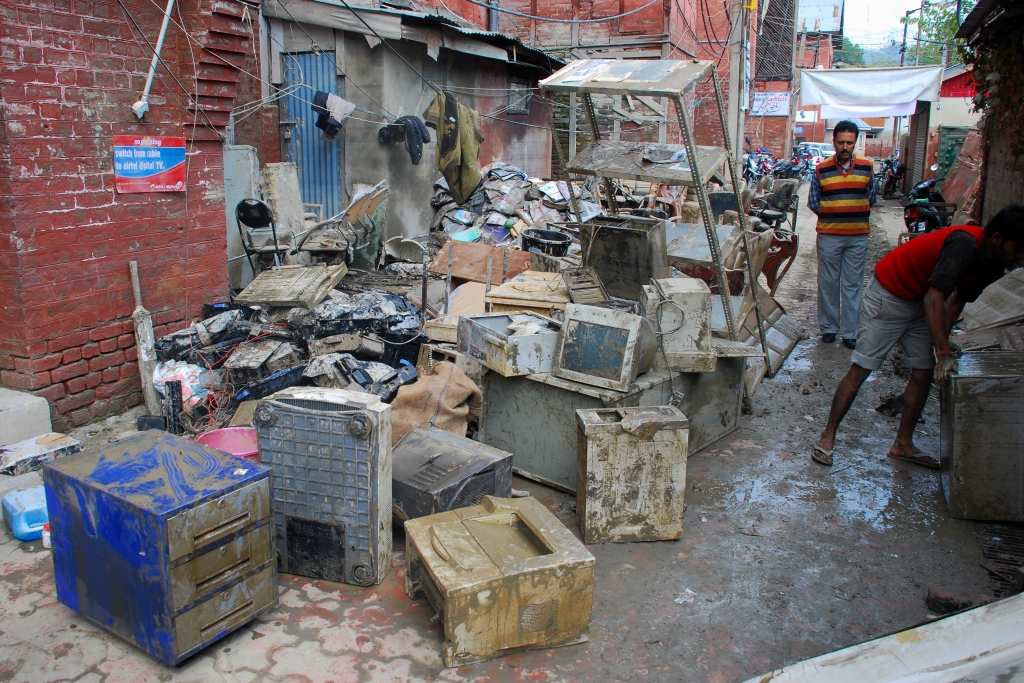
Damaged office equipment at Press Colony in Srinagar. [FPK Photo/Aamir Nowshahri.]
Another incident that I cannot forget took place at a relief camp established close to where I live.
One day while I was there, a crew from a TV news channel arrived. As the word spread, a large number of people assembled near the OB Van and began asking the reporter about news of what the situation was like in other areas.
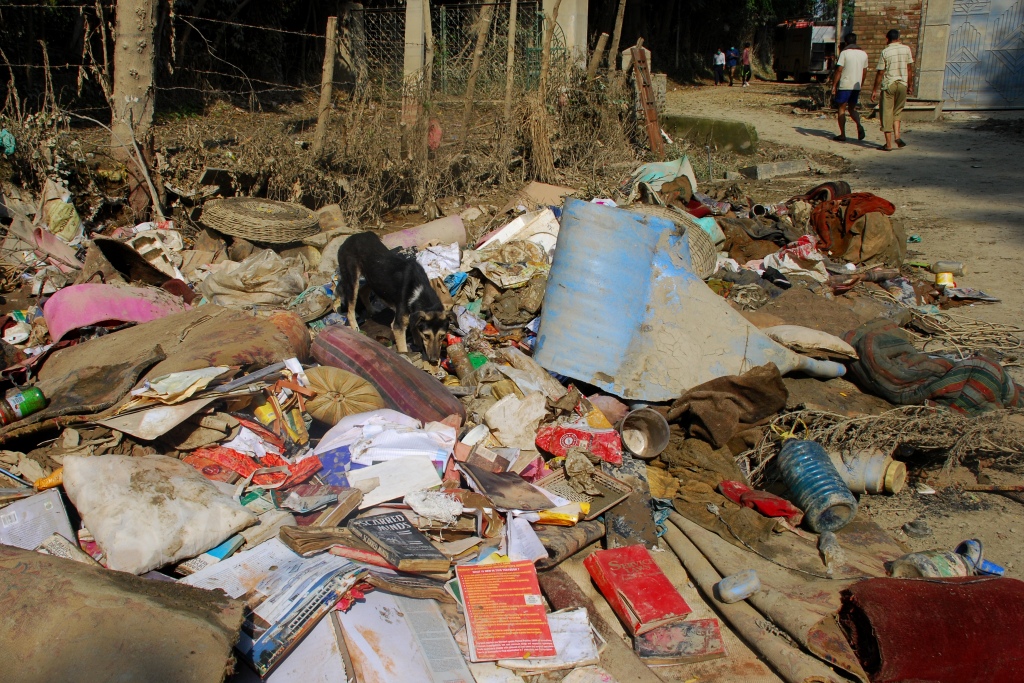
Flood-affected household belongings outside a house at Shivpora. [FPK Photo/Aamir Nowshahri.]
The reporter, it seemed, was the only connection between them and the rest of the world.
Overwhelmed and with a heavy heart, he had to cut a sorry figure telling the people that he could not be of much help.
I still remember the look of despair on the faces of the people.
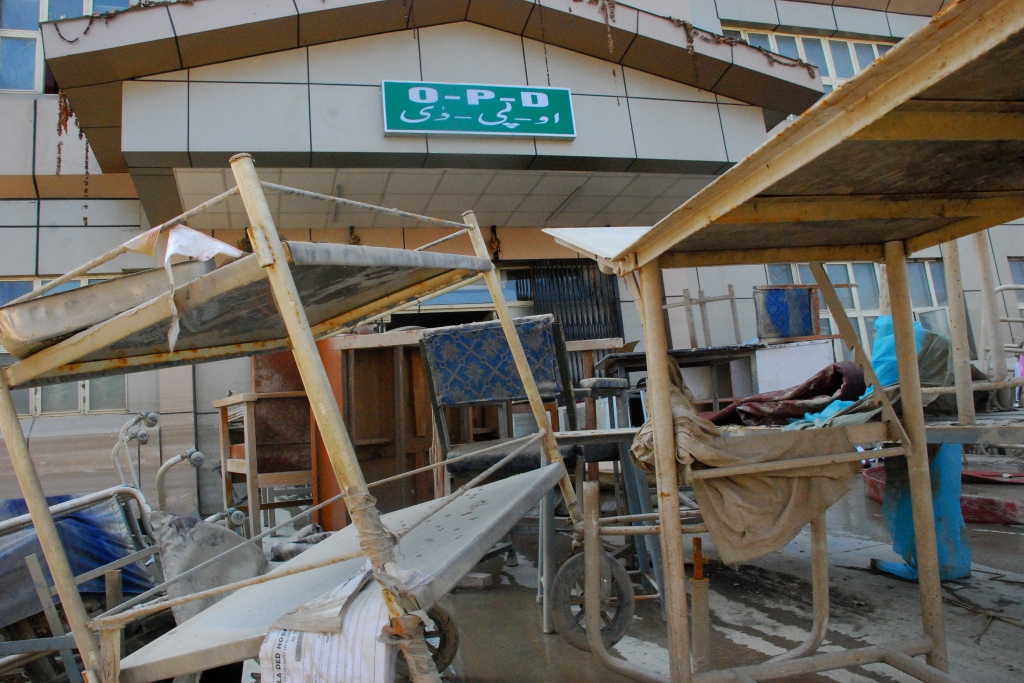
Scene of Out Patient Department at Government Lalla Ded Hospital. [FPK Photo/Aamir Nowshahri.]
There are many more things to talk about, but that will need a lot of time. I will restrict myself here, with the hope and prayer that may nobody have to ever go through such a situation again!
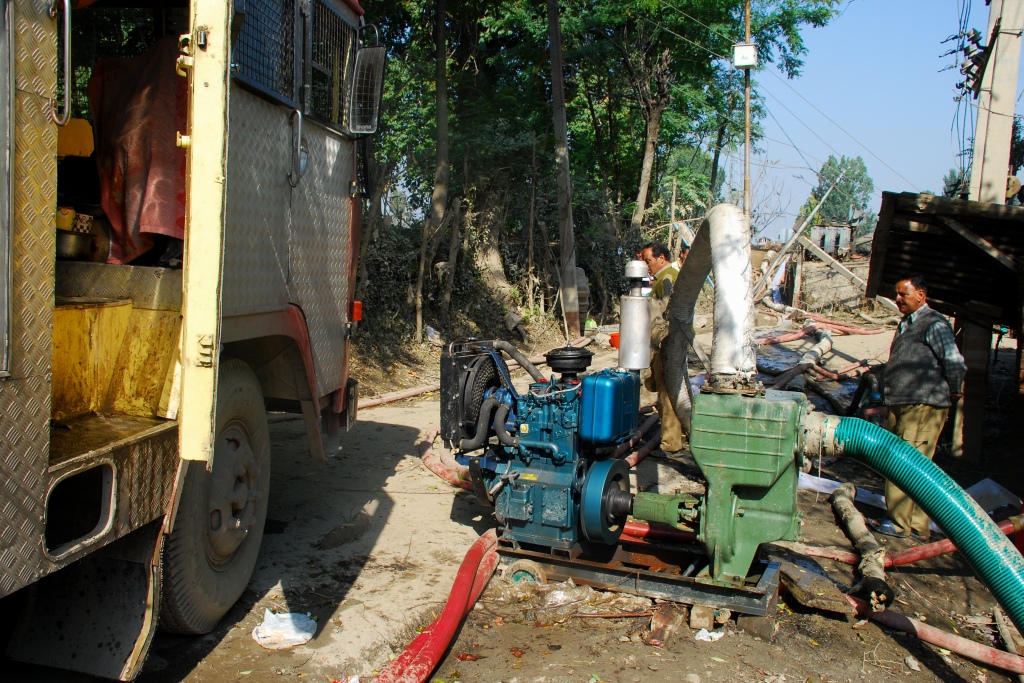
A dewatering pump installed at Shivpora area of Srinagar. [FPK Photo/Aamir Nowshahri.]
Famous sayings are not famous without reason. “Some wounds never heal” is probably the one saying that best describes what the Valley and its people had to go through in that fateful year.


